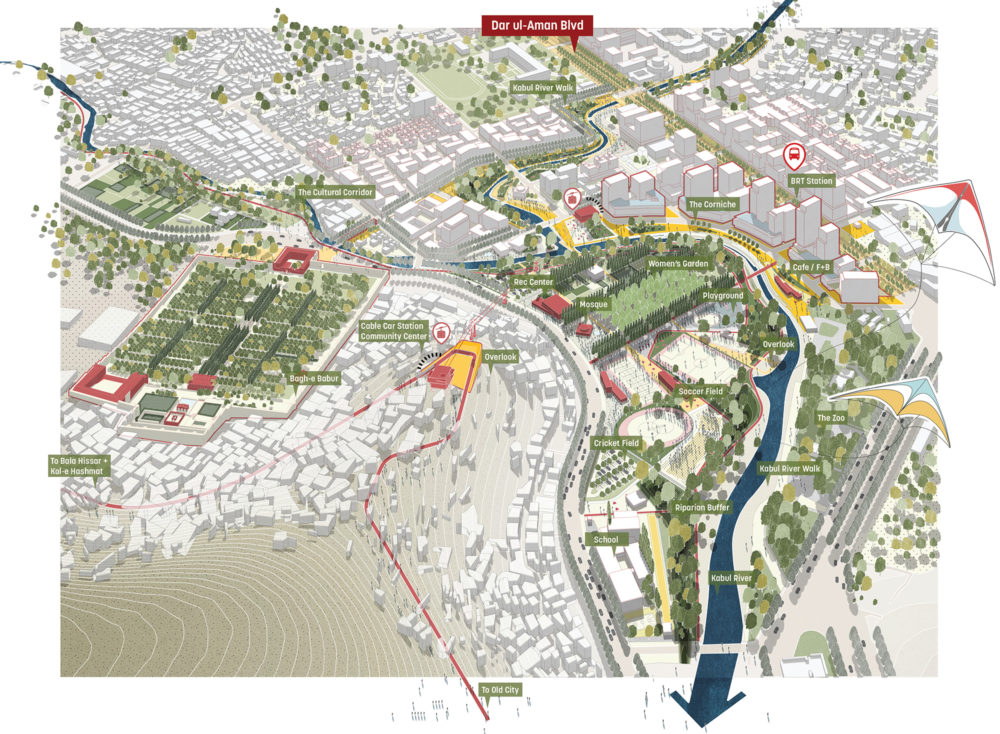
Dar ul-Aman and Massoud Corridor Districts
Kabul, Afghanistan
 Sasaki
Sasaki
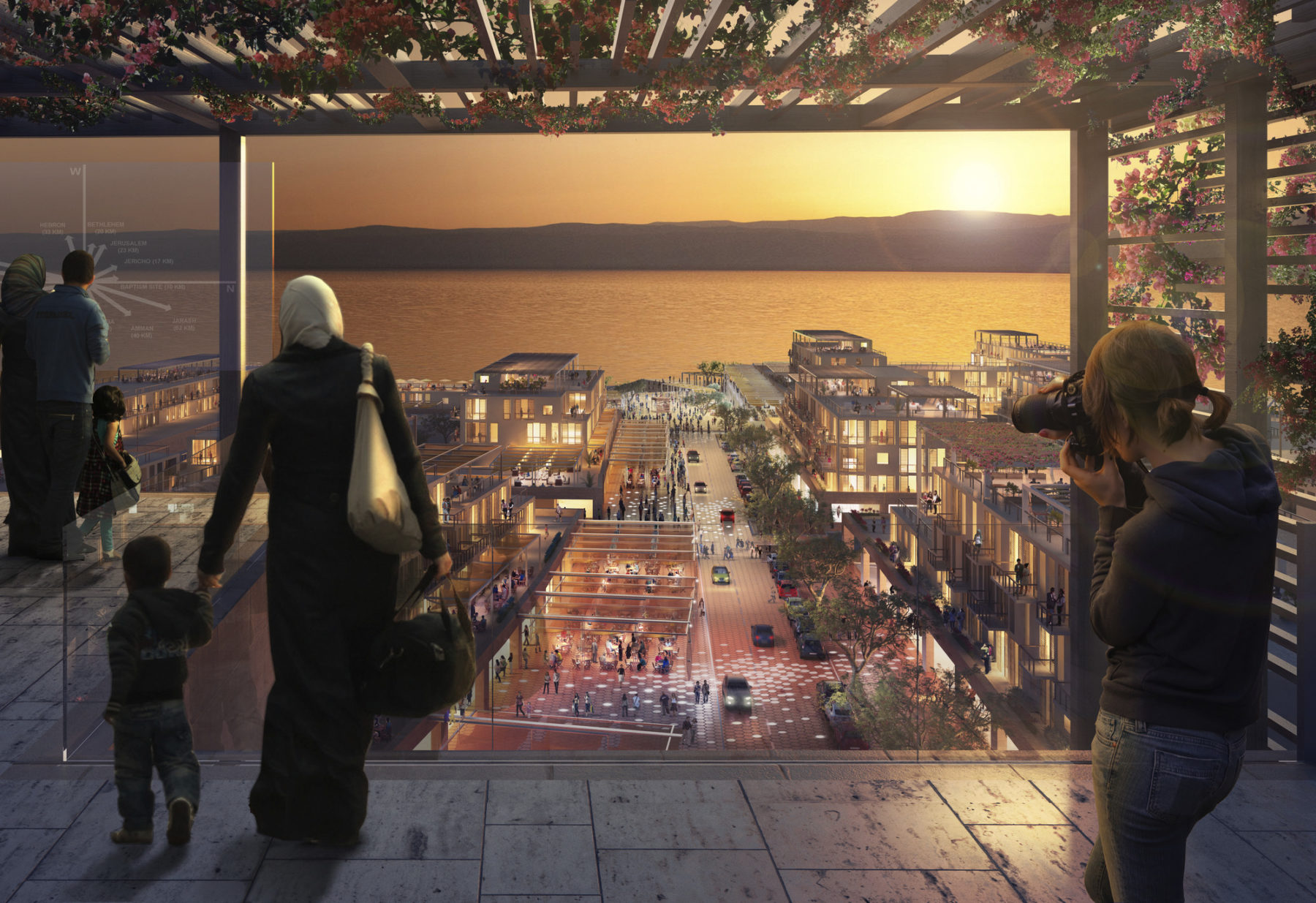
A landmark tower at the gateway intersection of the Corniche provides a comprehensive and unique view of public open space, mixed-use development, vibrant street life, and the stunning Dead Sea landscape beyond
The Detailed Master Plan for the Jordan Development Zones Company (JDZ) encompasses 40 square kilometers of land along the north and east coast of the Dead Sea. Over the past 15 years, the Kingdom of Jordan has focused on a balanced approach toward development and preservation in order to capitalize on increased tourism and to provide improvements to local existing communities. Sasaki was engaged to establish a detailed master plan as a sustainable framework for existing committed lands, future development parcels, infrastructure provisions, and natural resources protection.
The resulting plan establishes a comprehensive and site-specific approach to the social, economic, and environmental sustainability issues facing this stunning setting. The plan lays out a vision and blueprint for fostering a dynamic, robust, and sustainable tourism-based economy at the Dead Sea that will become a source of pride and revenue for the Kingdom and set the highest standard for sustainable development and innovative urban design. The plan establishes a balanced approach between development and conservation of the Dead Sea’s precious resources while supporting social infrastructure for nearby existing communities.
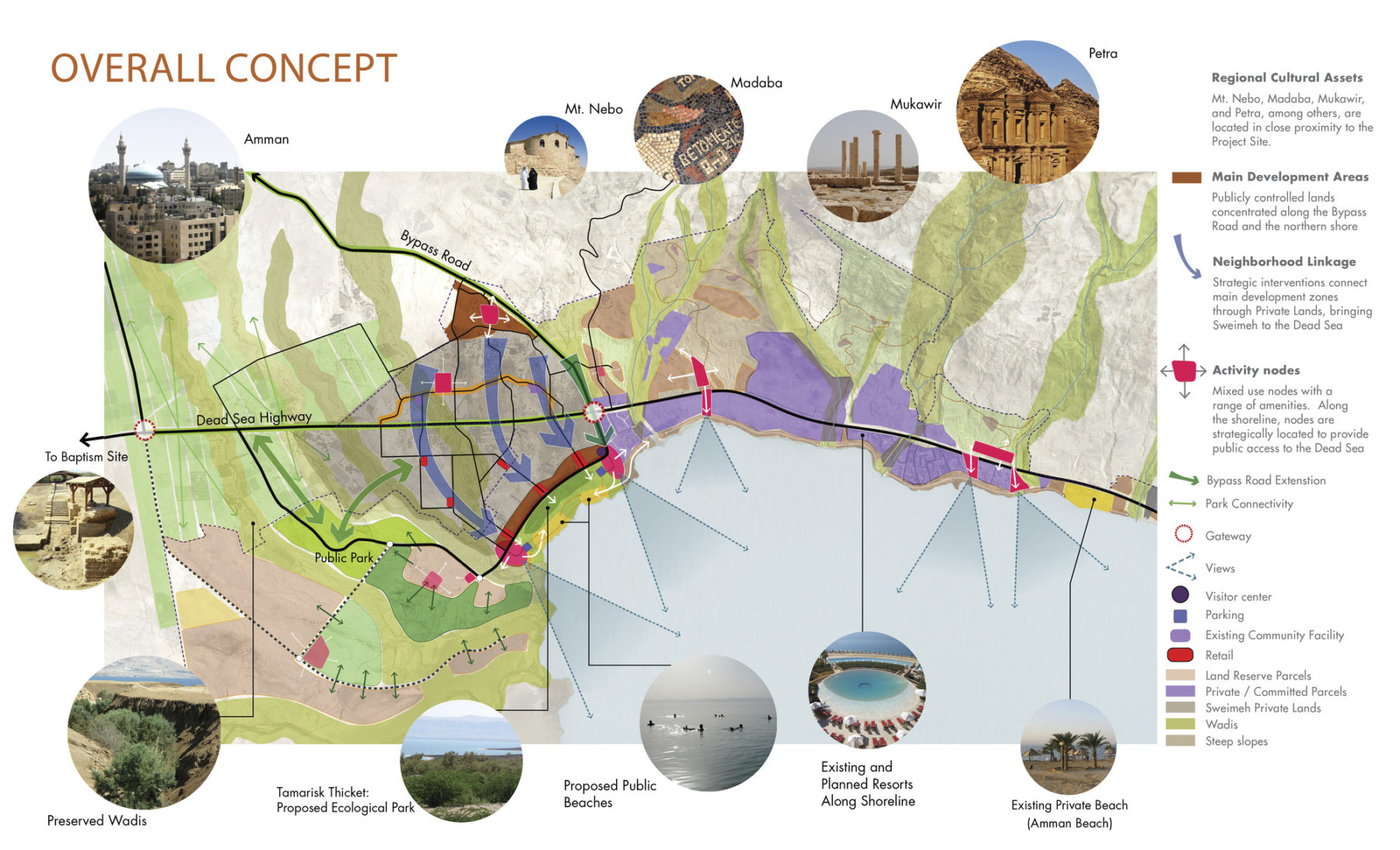
Overall concept
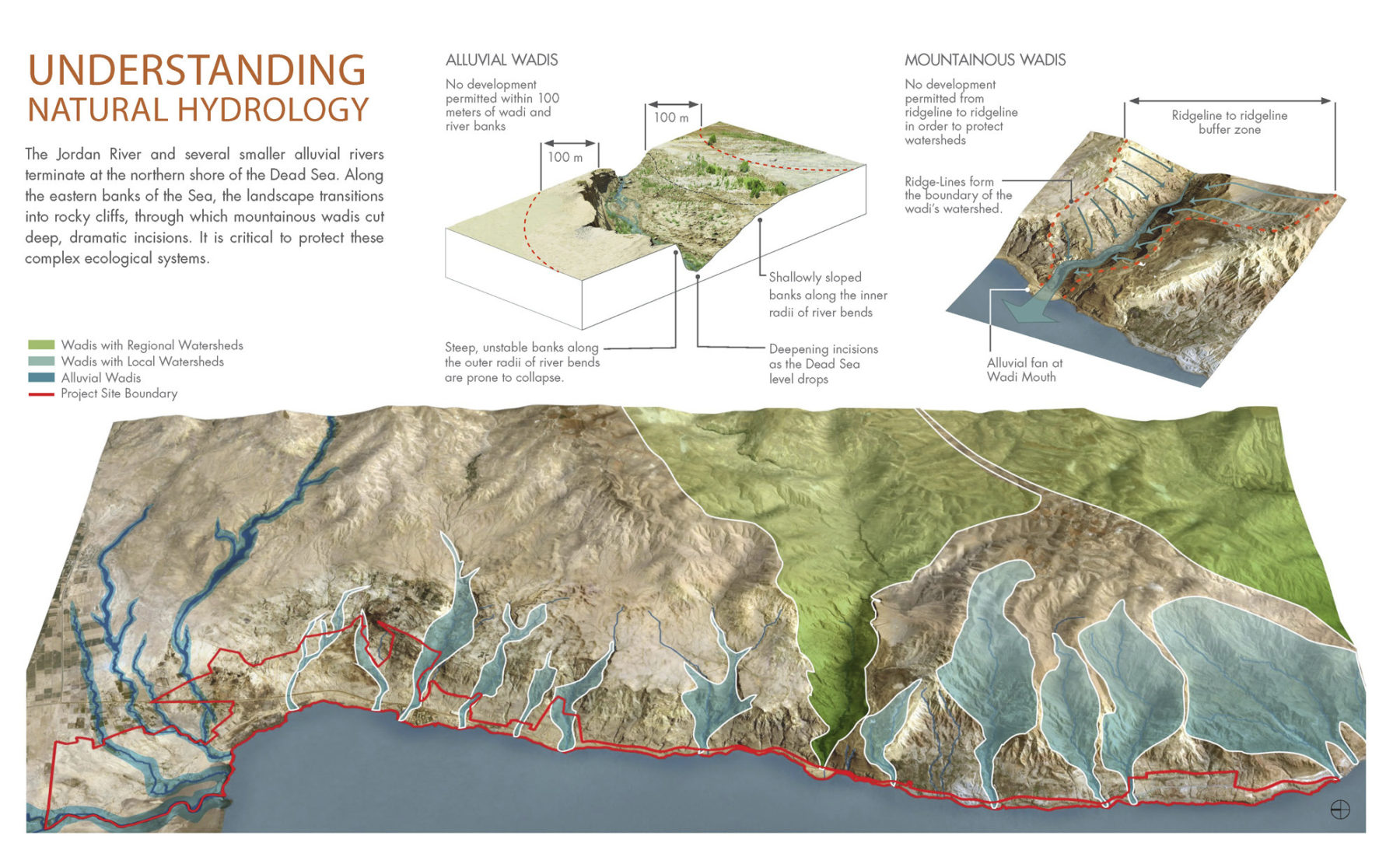
How the team understands the site’s natural hydrology
The first steps in framing the master plan included determining net usable land—identifying privately held land not within the purview of the JDZ, and setting aside ecologically sensitive land for conservation. The resulting developable land inventory became the basis for strategic interventions and development proposals. Comprehensive design guidelines, a detailed infrastructure report, and an extensive market study provide the JDZ with tools to attract investment and steer future development in accordance with the plan.
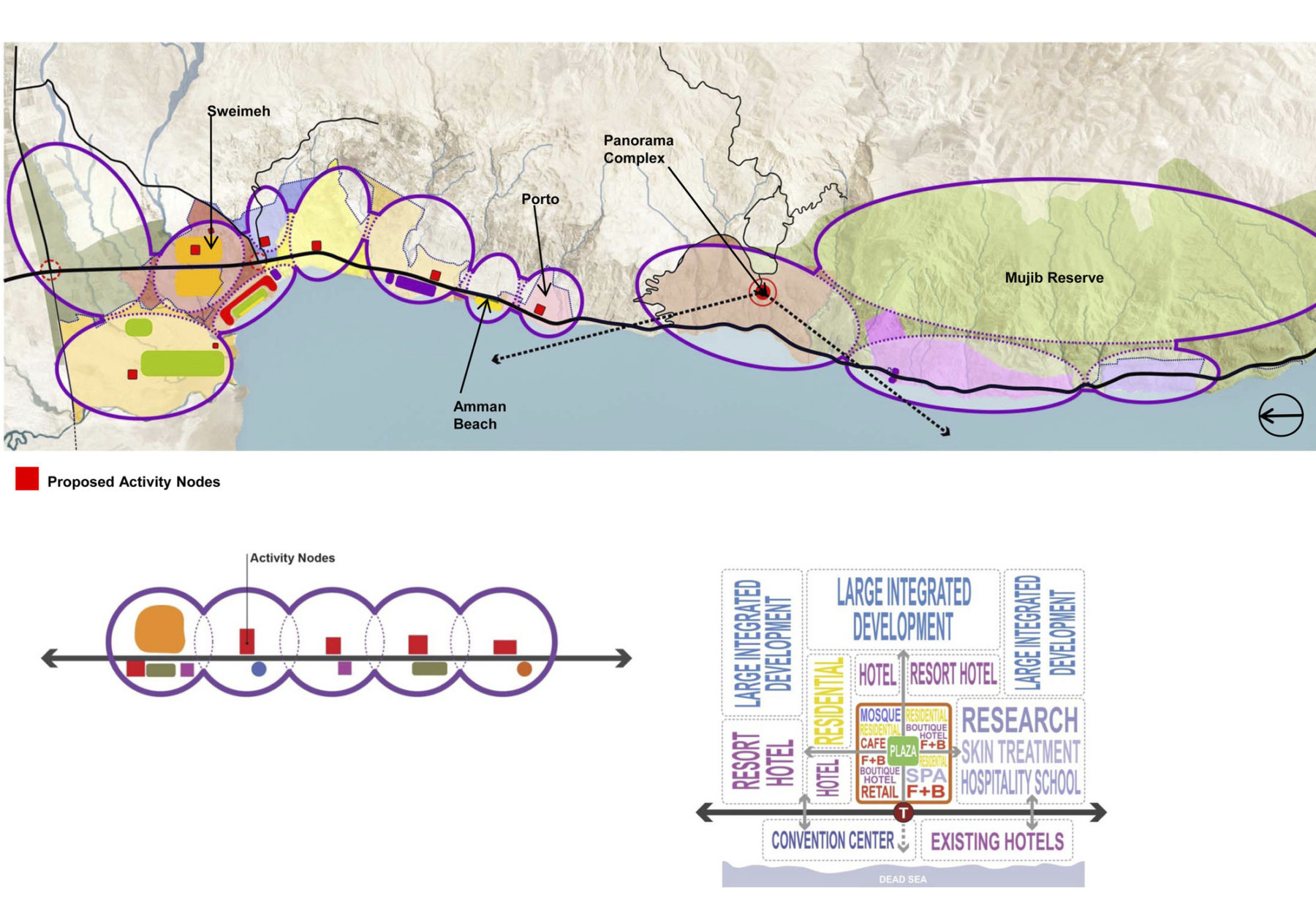
The market strategy
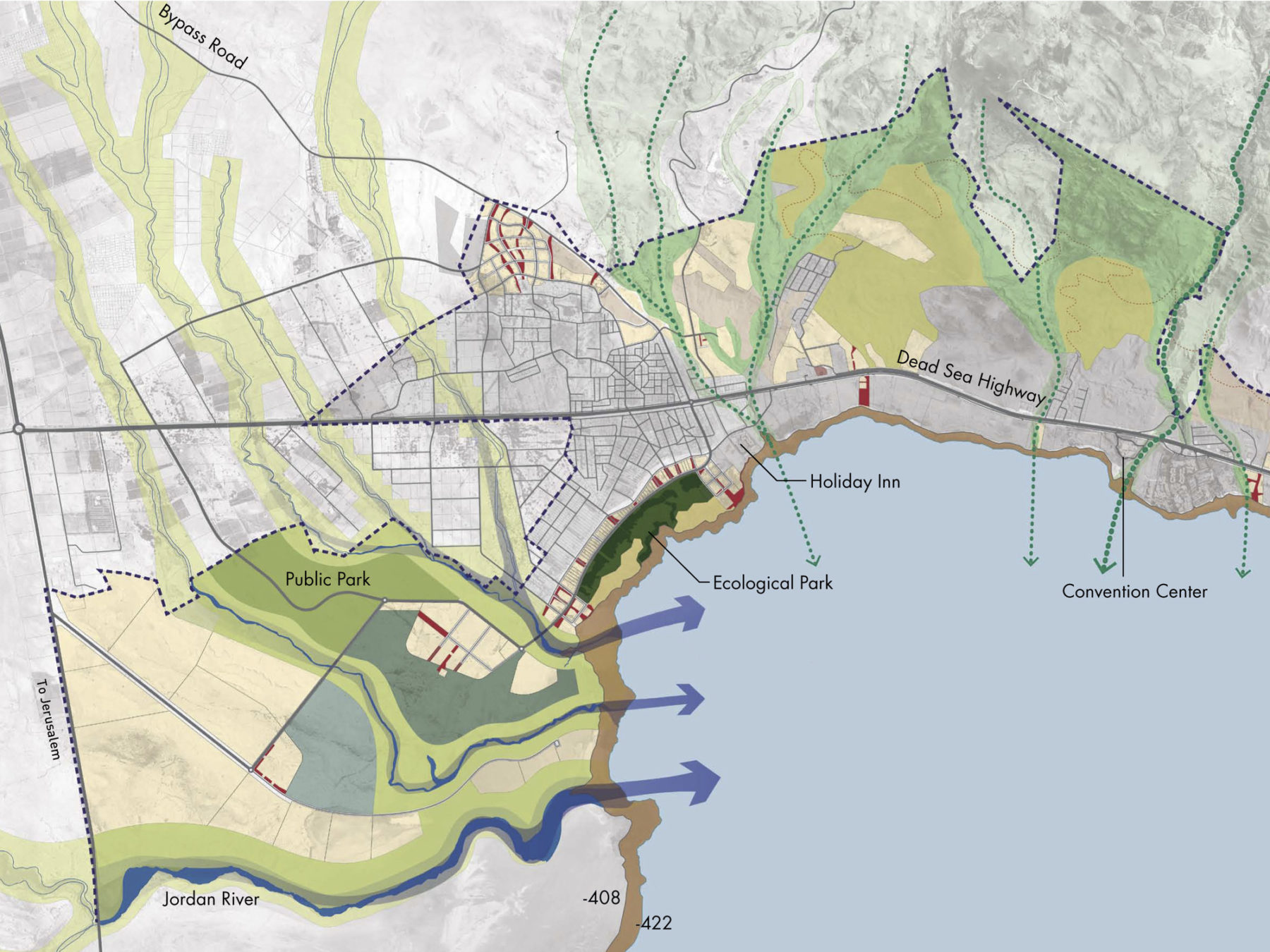
The open space strategy
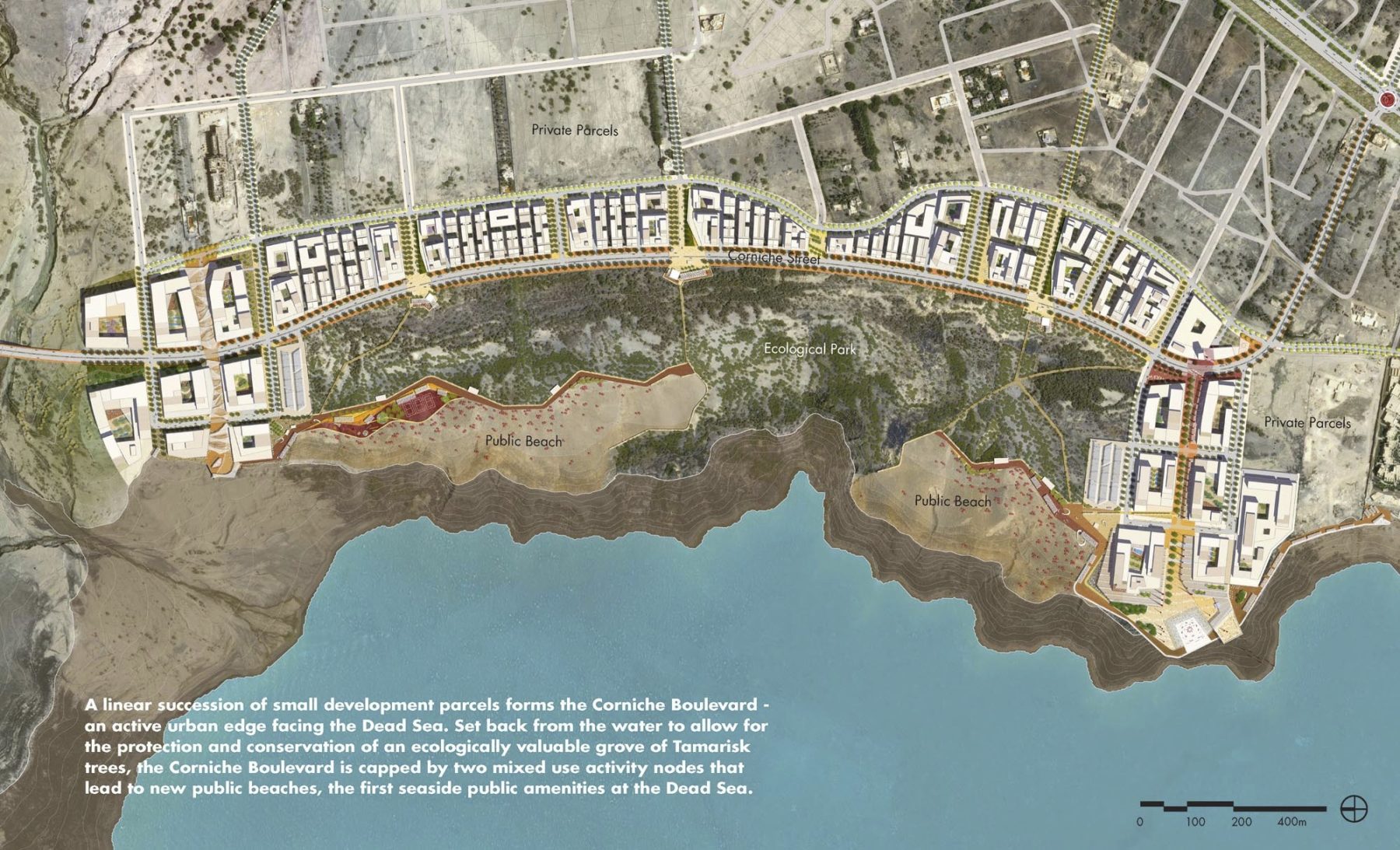
The Corniche Boulevard allows for mixed-use development while still protecting an ecologically valuable grove of Tamarisk trees
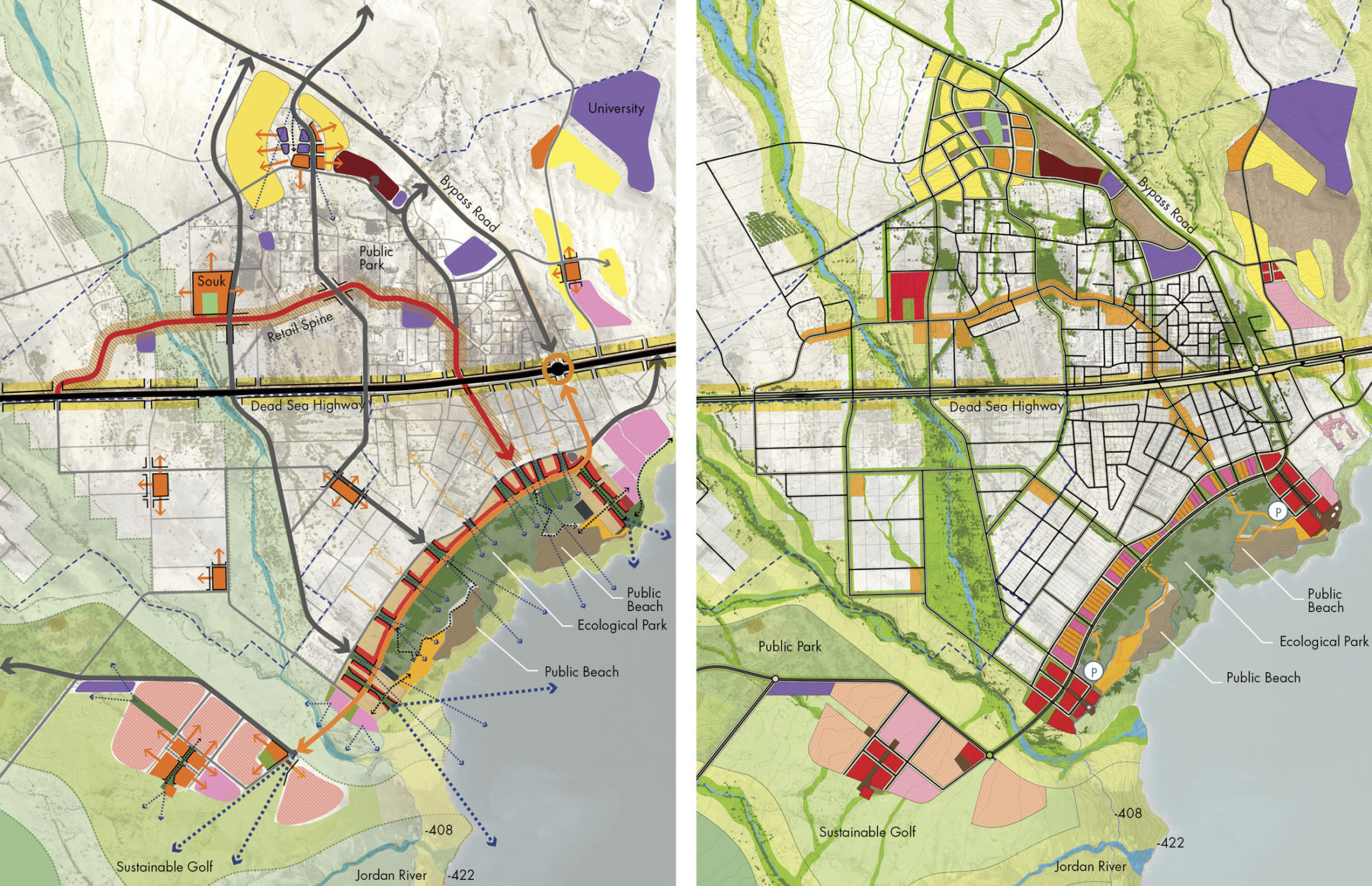
Proposed concept
The market strategy
The open space strategy
The Corniche Boulevard allows for mixed-use development while still protecting an ecologically valuable grove of Tamarisk trees
Proposed concept
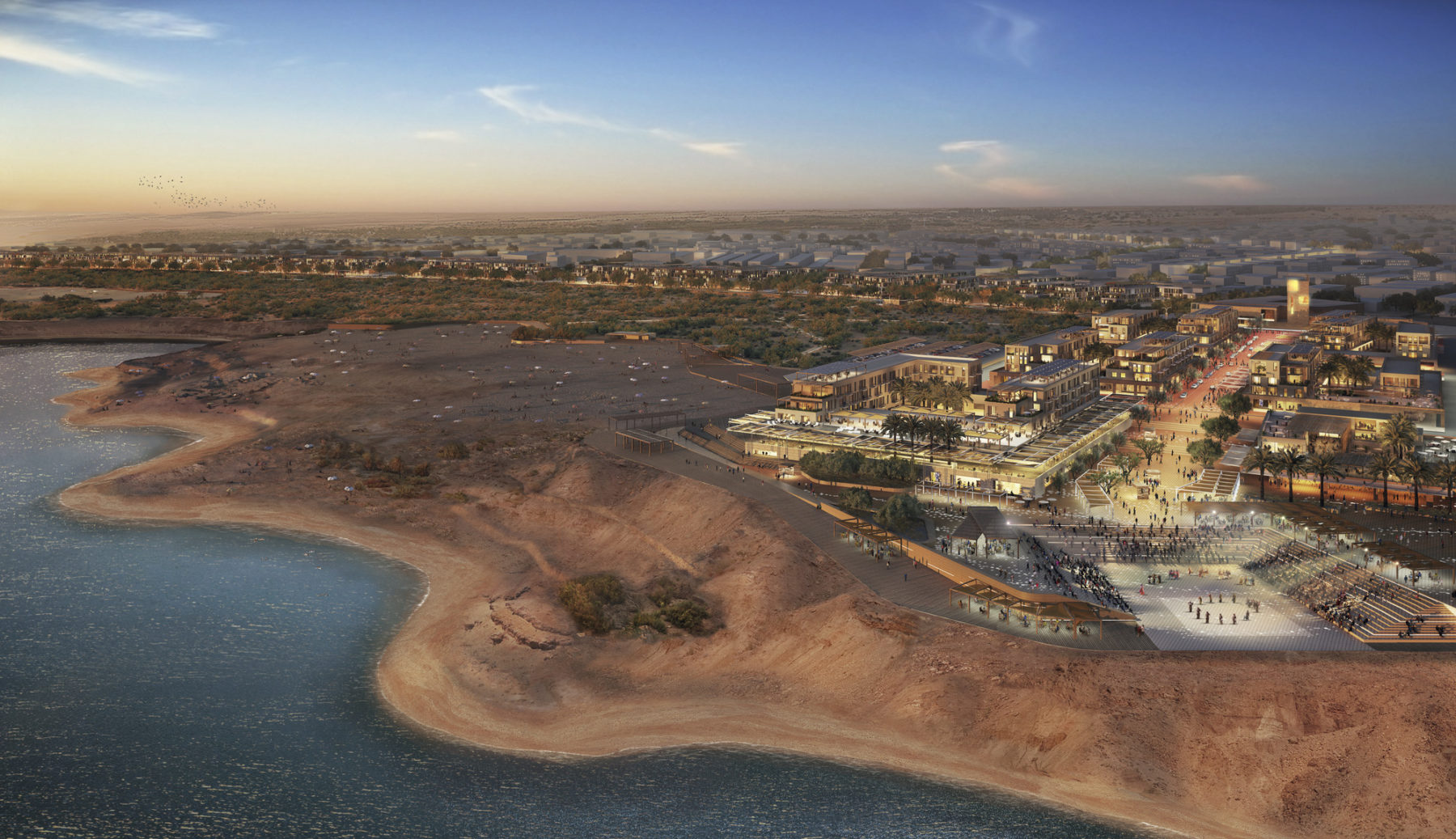
Visitors are drawn between active blocks of mixed-use buildings to the Waterfront Plaza which features a major public amphitheater, seating areas, and stunning views of the Dead Sea
The master plan conceives of the project site as a series of districts, each with its own mixed-use activity node providing a critical mass of services including public water access, views, vibrant street life, and a range of development opportunities for all scales of investment from international developers to local businesses. A spectrum of sustainable infrastructure systems—an improved road network, public transportation, fresh water supply, wastewater treatment, and utilities—stitch the districts together.
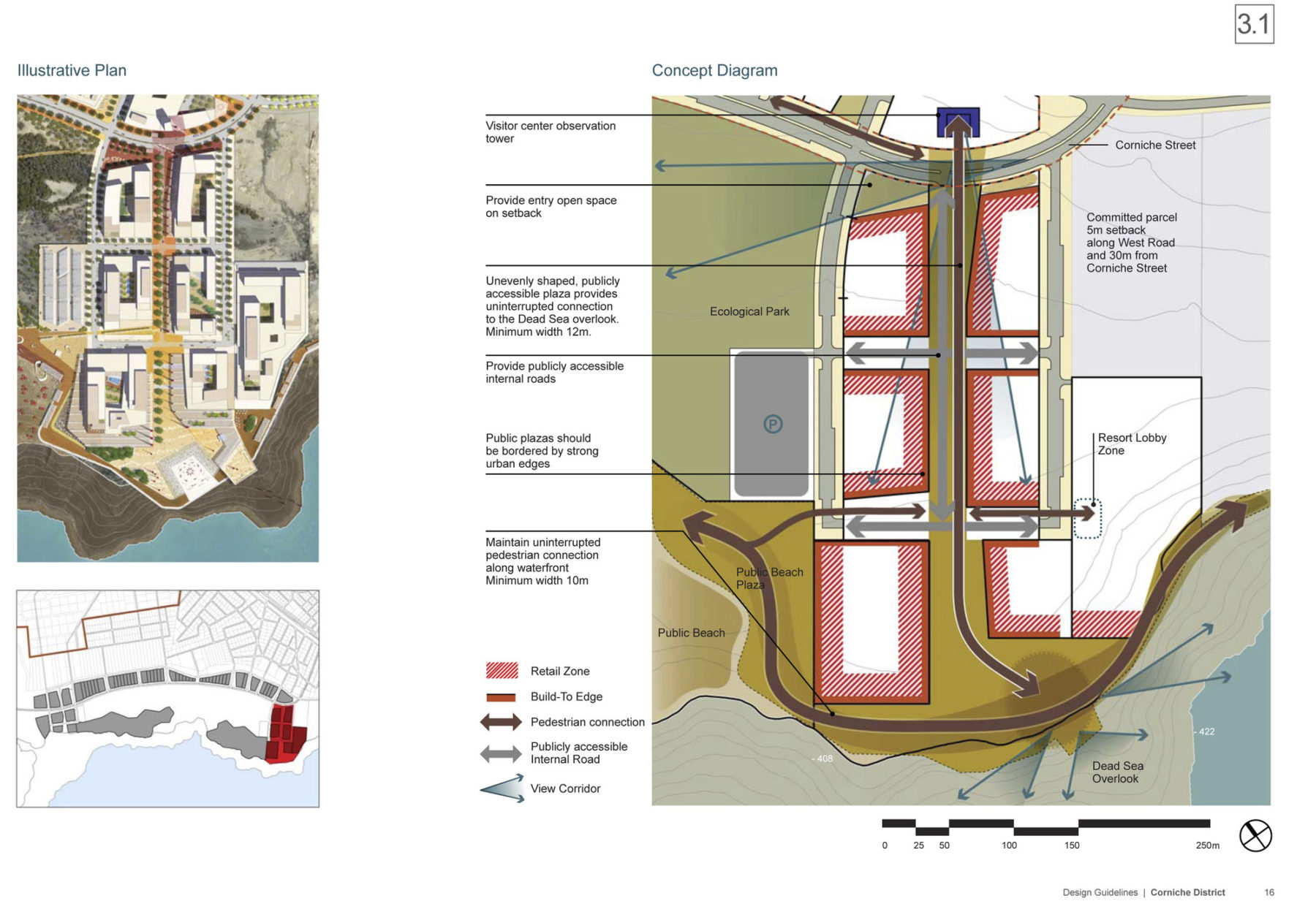
Illustrated plan and guidelines concept diagram
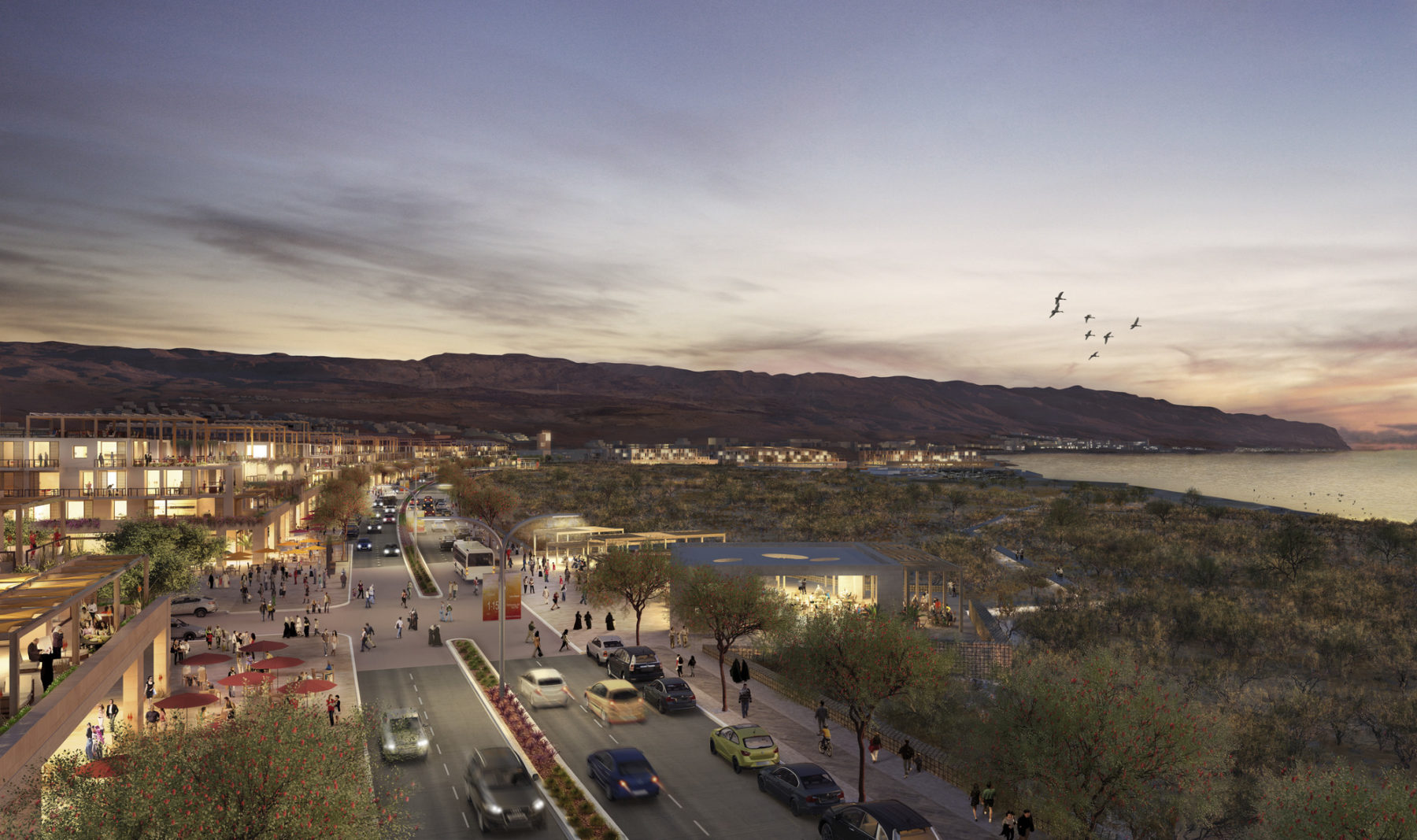
The Sweimeh Corniche is a dynamic, mixed-use neighborhood of hotels, residences, shops, restaurants, and public open spaces at the foot of the Dead Sea. Vibrant development, ecological conservation, and public access to the Dead Sea come together in this critical district
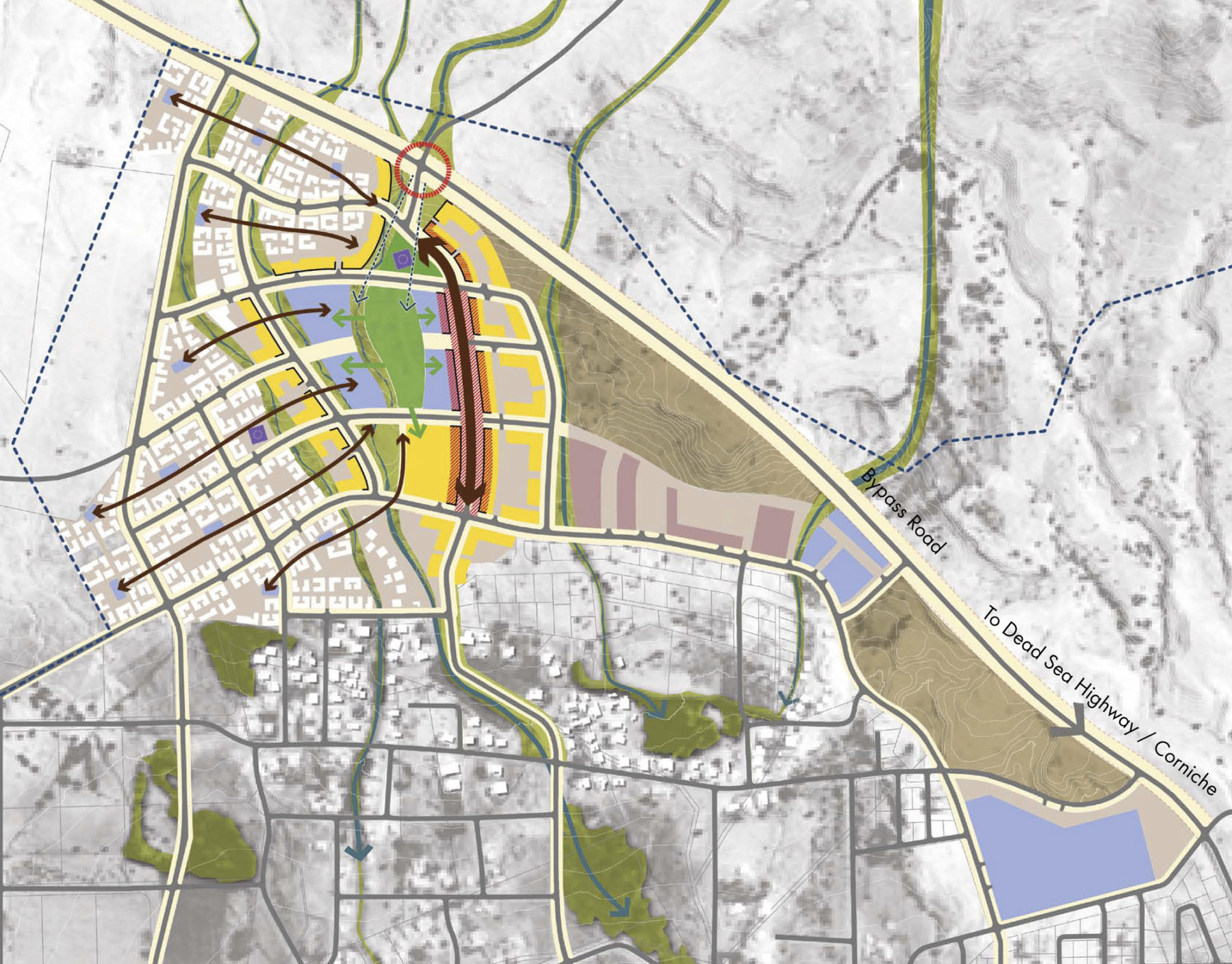
Existing ravine corridors are integrated in the Sweimeh Urban District, where social and affordable housing is combined with public amenities and community facilities
Illustrated plan and guidelines concept diagram
The Sweimeh Corniche is a dynamic, mixed-use neighborhood of hotels, residences, shops, restaurants, and public open spaces at the foot of the Dead Sea. Vibrant development, ecological conservation, and public access to the Dead Sea come together in this critical district
Existing ravine corridors are integrated in the Sweimeh Urban District, where social and affordable housing is combined with public amenities and community facilities
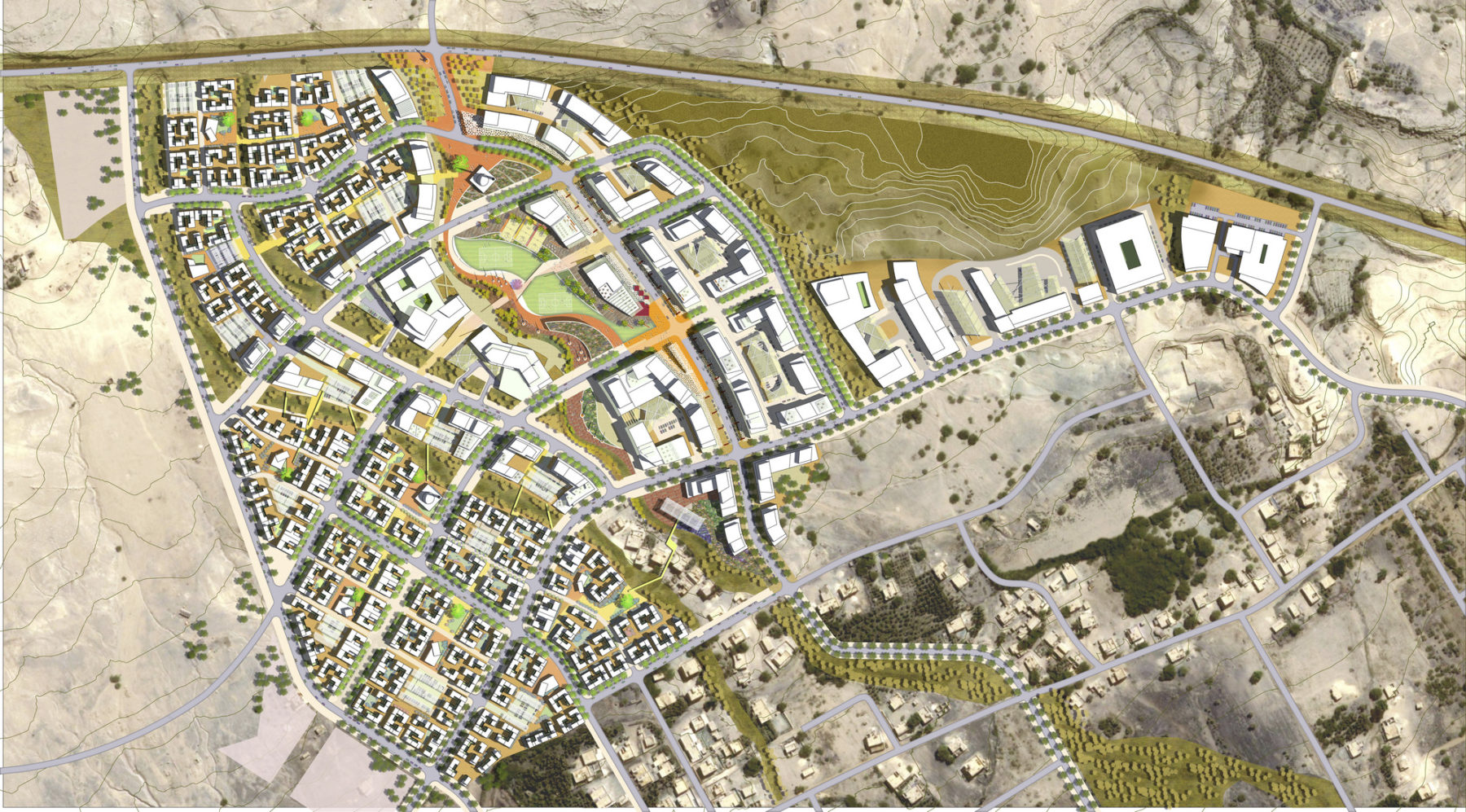
Sweimeh Urban District
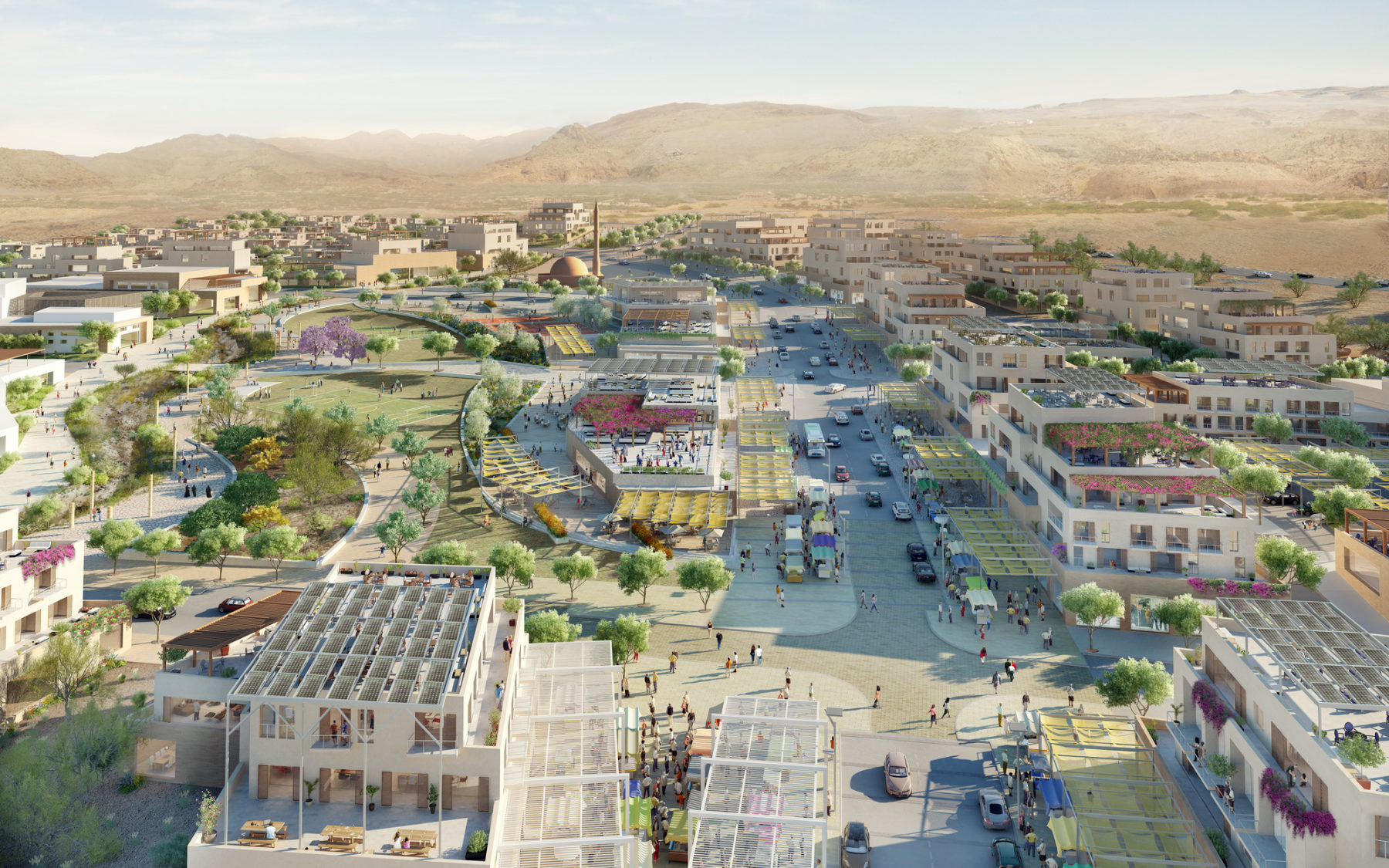
Oriented towards permanent residents of the Dead Sea Development Zone, the Sweimeh Urban District presents a welcoming gateway to the Dead Sea. Public amenities including a mosque, community facilities, a significant new open space, and a commercial district form the heart of this district. A range of housing types and smaller scale public amenities form the surrounding neighborhood.
Sasaki also produced a Strategic Environmental Assessment, the first of its kind and scope in Jordan, for informing sustainability strategies incorporated in the plan. These strategies are incorporated at multiple scales. On the regional level, the scarcity of fresh water is addressed through a careful analysis of future supply and the introduction of measures to mitigate demand. A proposed centralized Waste Water Treatment Plant will recycle precious water for irrigation while solving basic public health and pollution problems caused by insufficient waste infrastructure. Public transportation reduces reliance on private vehicles. At a district level, streets and blocks are laid out to minimize solar heat gain on buildings. At the building level, guidelines informed by the Jordanian Green Building initiative promote sustainable strategies such as building shading, material selection, and xeric planting palettes that conserve resources while referencing regional design and enhancing a sense of place.
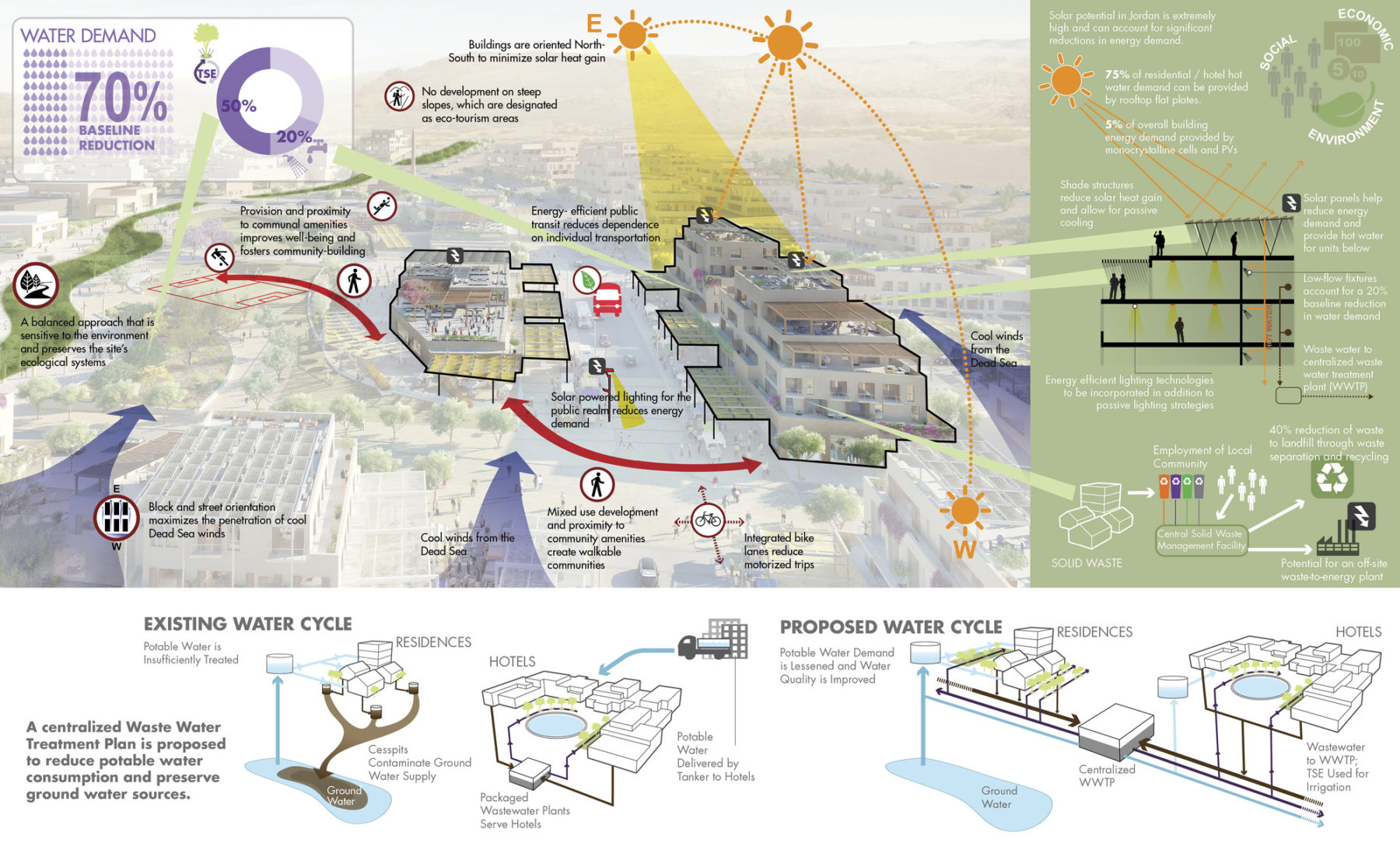
Integrated sustainability strategies
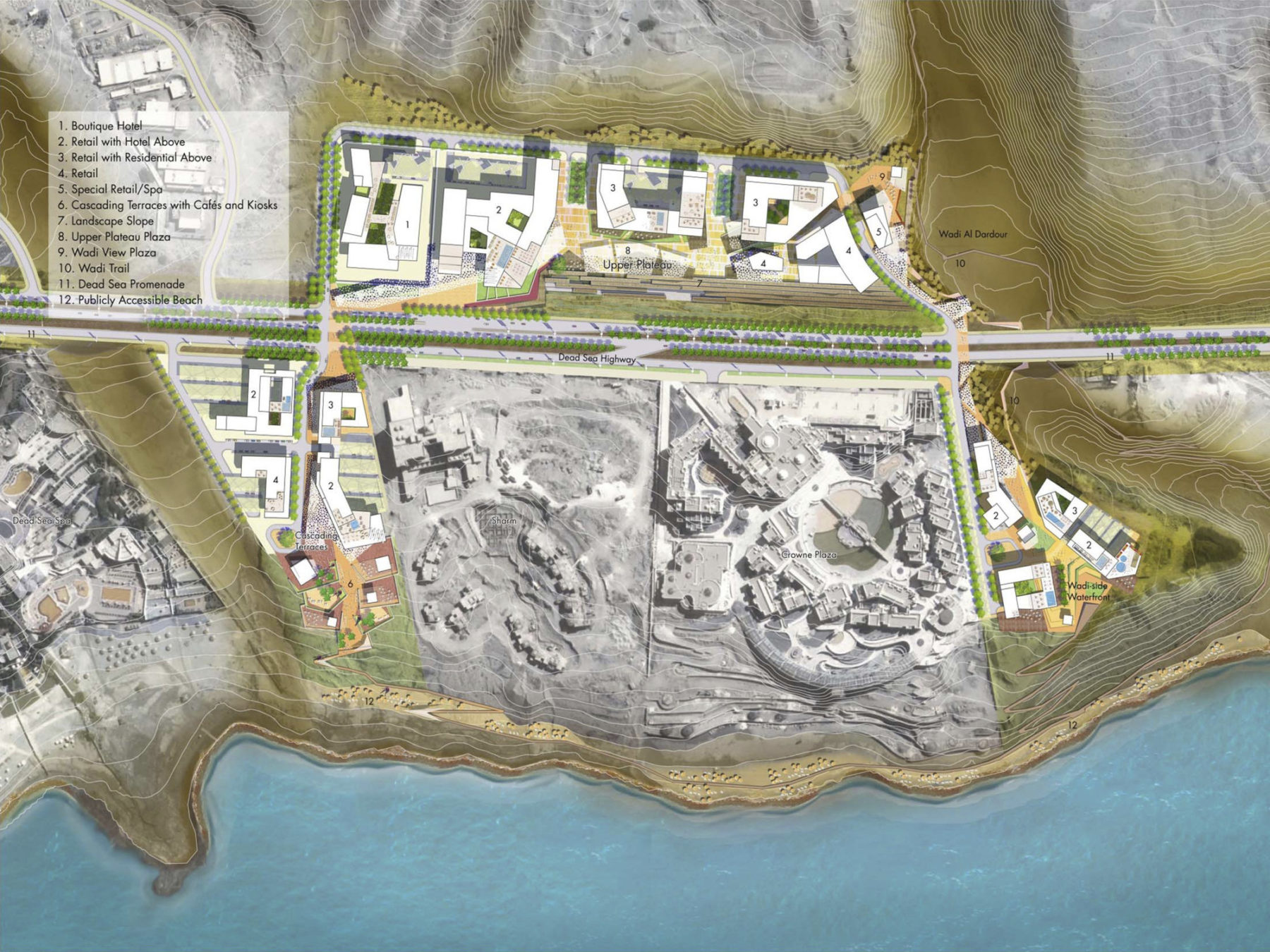
Convention Center District
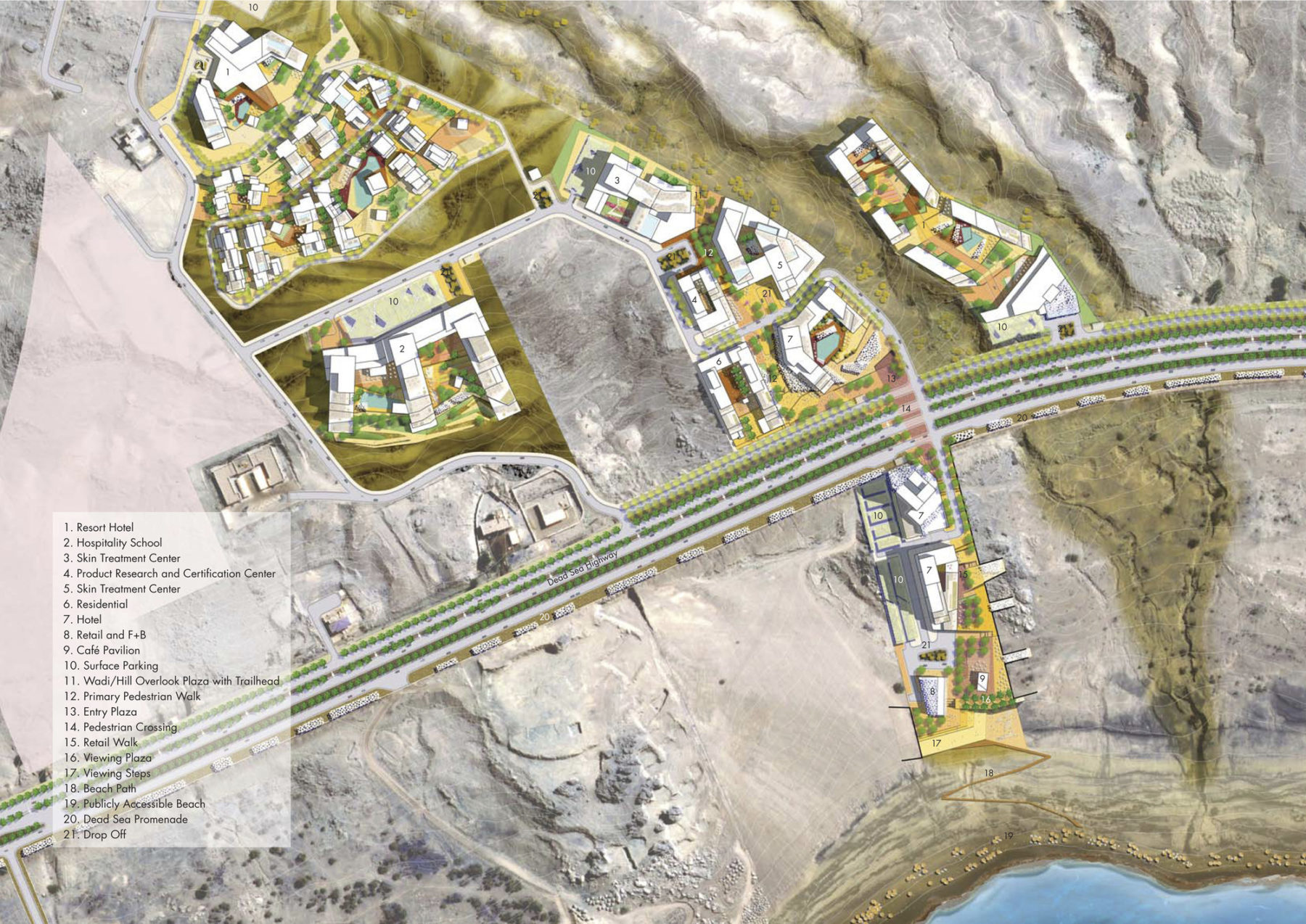
Adjacent to existing hotels and Jordan’s flagship convention center, the Convention Center district creates strategic insertions on available land between private parcels and on an underutilized parking lot, providing access to and views of the Sea
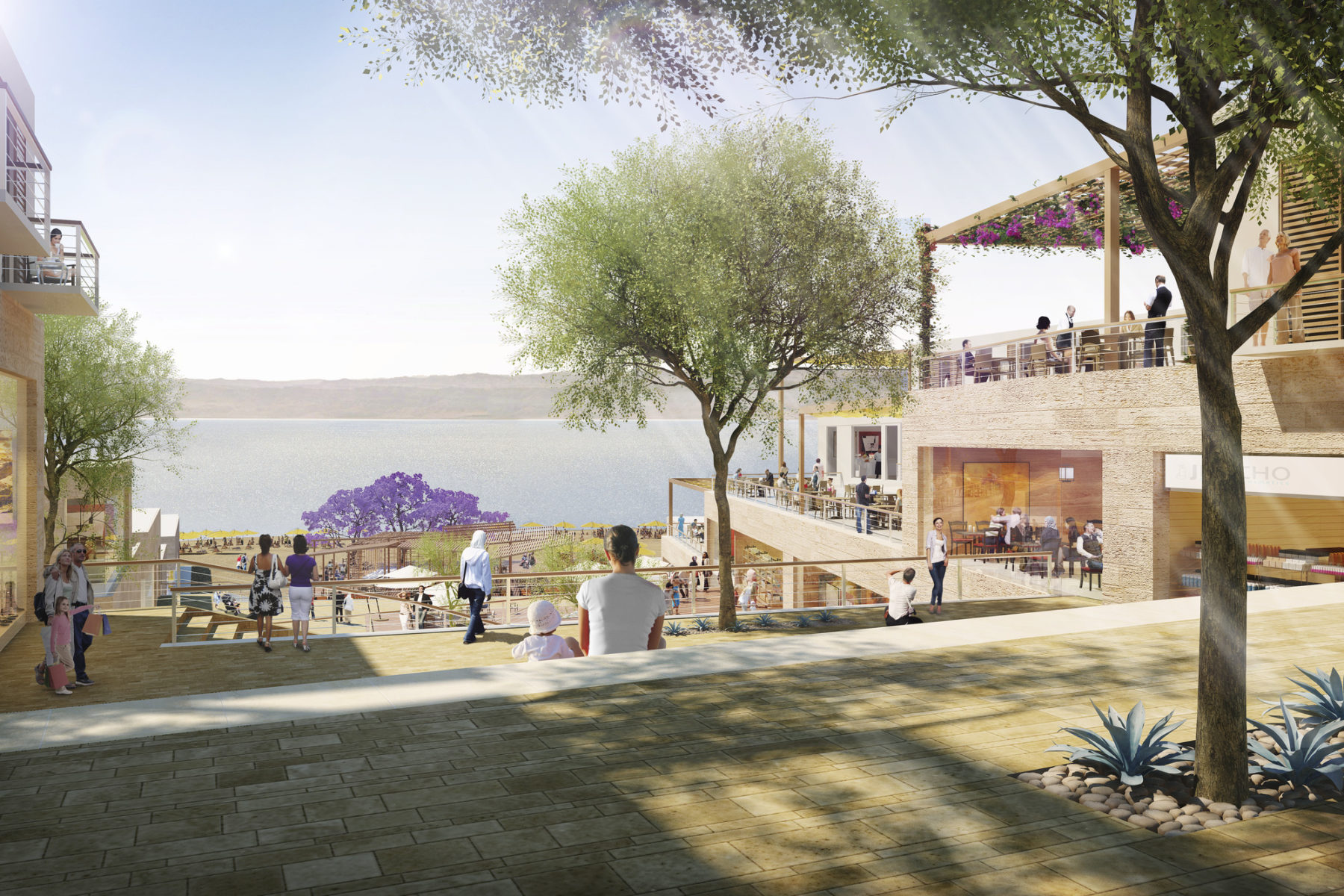
A vibrant public realm establishes physical and visual connections to the water
Integrated sustainability strategies
Convention Center District
Adjacent to existing hotels and Jordan’s flagship convention center, the Convention Center district creates strategic insertions on available land between private parcels and on an underutilized parking lot, providing access to and views of the Sea
A vibrant public realm establishes physical and visual connections to the water
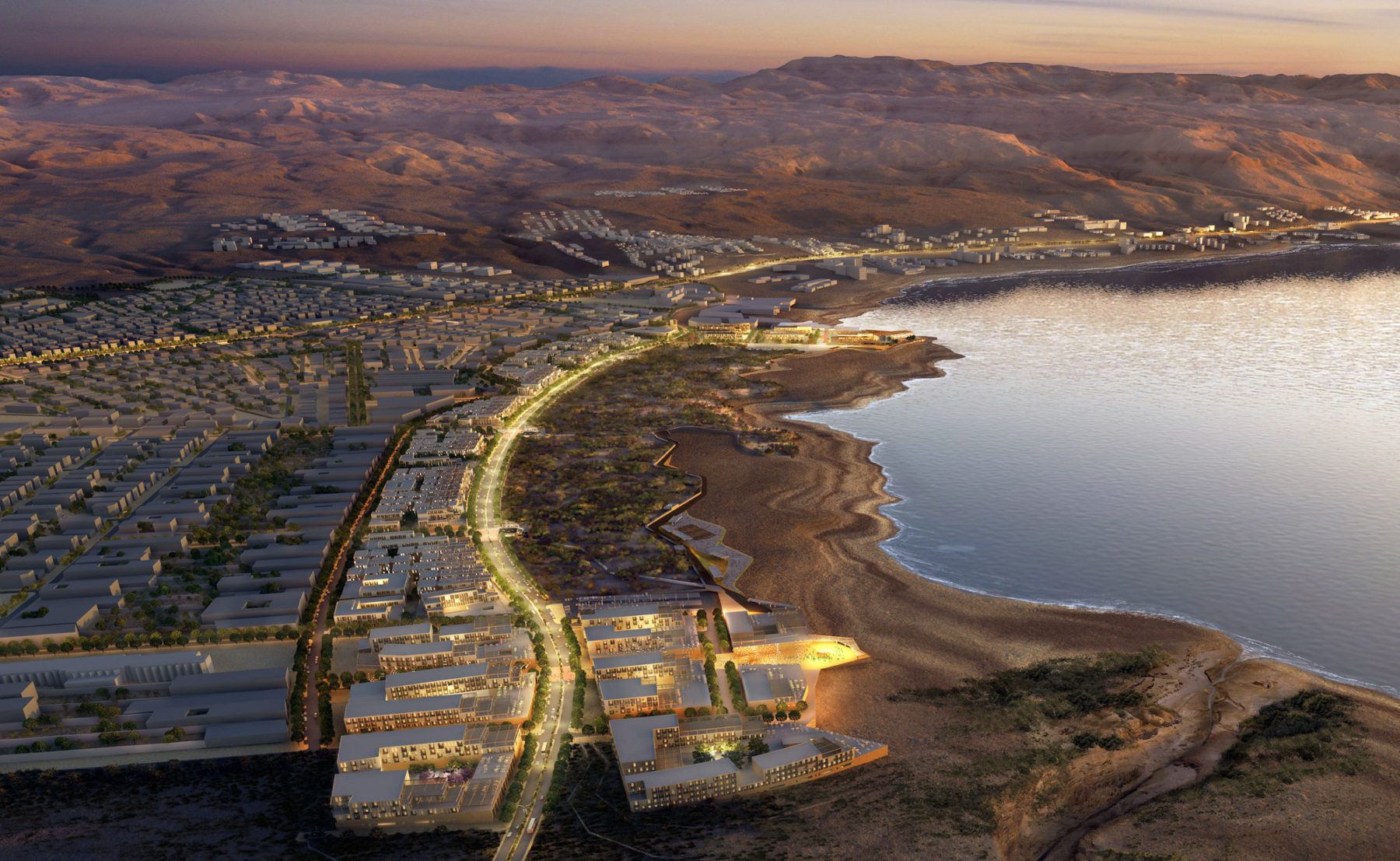
This robust and sustainable framework for future development at the Dead Sea focuses on the public realm, access to the Sea, and sustainable infrastructure
For more information contact Dennis Pieprz.